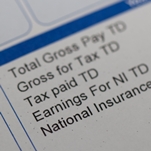 Manufacturers, like many other businesses, must pay Social Security, Medicare, and federal unemployment taxes, as well as state unemployment tax in most states, on their employees’ wages. Collectively, these are called payroll taxes, and they can take a big bite out of a manufacturer’s bottom line.
Manufacturers, like many other businesses, must pay Social Security, Medicare, and federal unemployment taxes, as well as state unemployment tax in most states, on their employees’ wages. Collectively, these are called payroll taxes, and they can take a big bite out of a manufacturer’s bottom line.
To reduce your company’s payroll tax burden, you might want to consider one or more of these strategies:
1. Offer tax-exempt fringe benefits instead of more money.
Even though you may want to reward employees with bonuses or raises, consider tax-exempt fringe benefits instead. You can deduct the cost of the benefits just as you would wages or bonuses, but you won’t owe payroll taxes on them. Employees also won’t owe income or payroll taxes on the benefits, and because they might otherwise have to buy these services with their after-tax wages, fringe benefits can also help their dollars go further.
Examples of tax-exempt fringe benefits include health benefits, education assistance, dependent care assistance, group term-life insurance, certain meals on the business’s premises and retirement planning services. Dollar limits and exceptions apply to some benefits, so consult your tax advisor before launching a benefits program.
2. Establish an accountable plan for employee reimbursements.
If you reimburse workers for mileage, tools or other job-related expenses, those payments generally are subject to payroll taxes. But by establishing an accountable plan, you can avoid owing payroll taxes on those reimbursements. Plus, they will be excluded from employees’ taxable income.
Expenses need to have a business connection to be included in an accountable plan. Employees also need to provide you with proper documentation for each expense, generally including an expense report and a receipt, within 60 days of incurring it.
You can use the accountable plan to pay employees in advance for upcoming expenses, but employees must return any excess reimbursements within a reasonable timeframe, typically 120 days.
3. Use independent contractors when possible.
Bringing on independent contractors can save you payroll taxes because these workers are responsible for their own taxes. You must be wary, however, of the pitfalls that come with misclassifying workers. If you have too much control over a worker, the IRS will consider the worker an employee, even if you’ve treated the worker as an independent contractor. This could result in back taxes, interest and penalties.
Typically, a worker who completes work related to your core business is considered an employee. Manufacturers often use independent contractors for maintenance, sales or other noncore functions.
Before engaging potential independent contractors for a particular task, evaluate the degree of control you’ll have over the workers and look at how other manufacturers classify workers who do the same work. If independent contractor status is warranted, have workers sign an agreement stating they are independent contractors and responsible for their own taxes, and issue a Form 1099 to each one.
Payroll taxes are a necessary part of doing business, but with a little planning they can be much less painful.
Contact us at 215.441.4600 if you have questions or would like to discuss how this topic may impact your business.

